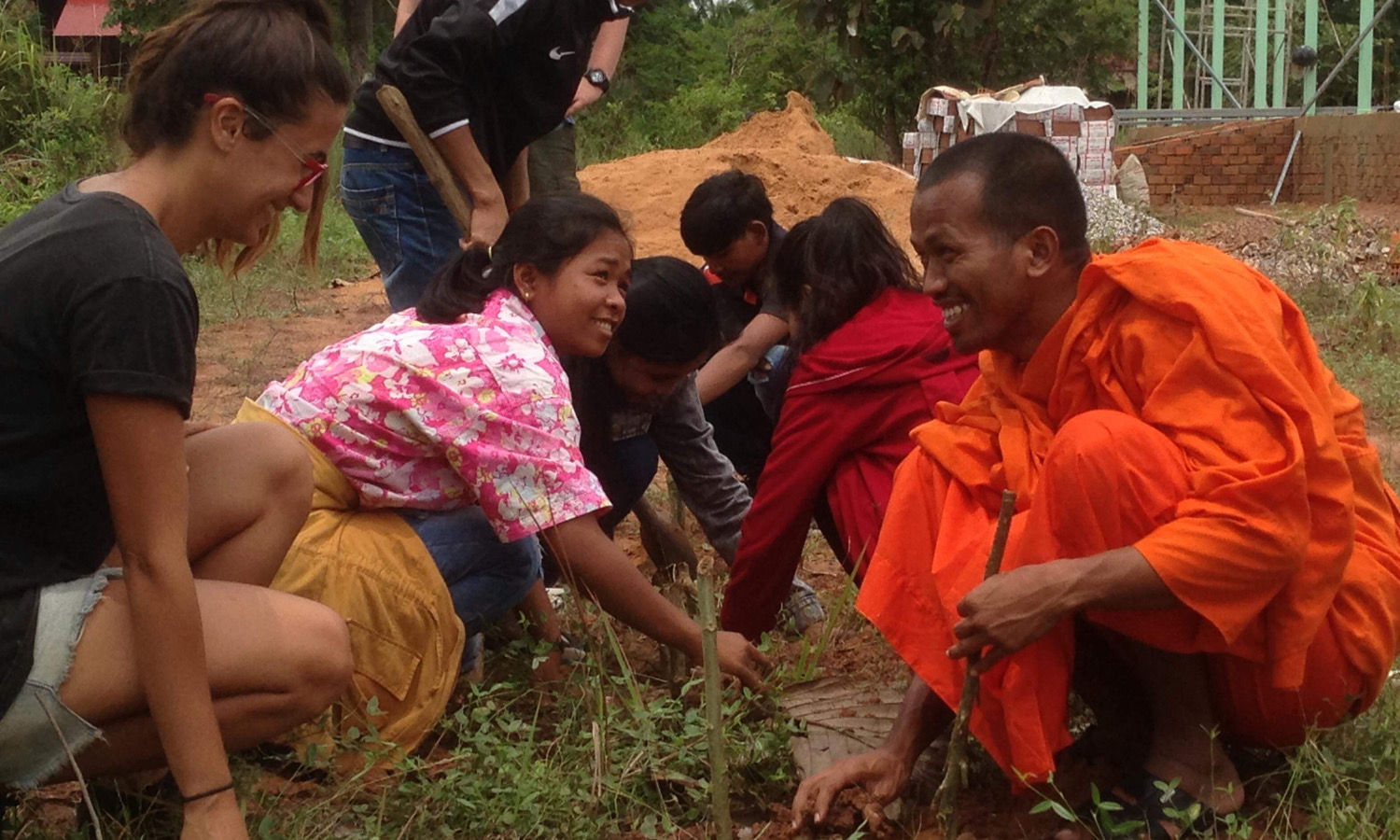I write this from the once-lush rice fields of Northwest Cambodia. The region has just completed its rice harvest for the year, so the vistas are slightly beige with thick smoke in the air. The smoke comes from two main sources: preparing charcoal through burning timber, and burning of the harvested rice paddy.
Despite the tropical heat, both practices send shivers down my spine—primarily at the thought of burning out topsoil and chopping down trees at such an alarming rate to make charcoal. However, such harmful practices are quite common across Cambodia, because it doesn’t require labor or financial input for clearing the fields. Plus, it is quick! Most farmers also believe these practices are improving soil fertility. But while adding biochar can be a great addition to the soil for fertility as well as regulating pH and water retention qualities, burning off topsoil is never recommended.
On closer observation, the structure used for making charcoal is a remarkable dome-shaped cob oven that all outdoor/permaculture enthusiasts will admire. A technique using a mixture of clay and rice-husk sculpts up a curved furnace. It is described as people friendly—if only what it was being used for was environmentally friendly.
Which brings me to The Green Shoots Foundation Agri-Tech Centre, a structure making use of the earthen-building technique and other eco-friendly forms of architecture to create a school for not just horticulture training but also rural development, nestled amongst the villages of Northwest Cambodia. The Green Shoots team and their Cambodian partner organization have taken their six years of experience working on school gardens to devise a curriculum aimed at out-of-job and out-of-school young people, giving them practical vocational skills while instilling professionalism and dignity in rural occupations. For us, it is more than just growing vegetables.
In the long run, the Centre aims to repackage farming as a profession and make it exciting for young people. Green Shoots are lucky to have a host of inspirations (such as permaculture, agroecology, farmer field schools, and local projects) and pride themselves on being a small nonprofit organization that perpetually monitors and evaluates its activities.
The first way to repackage farming as a profession was to include low-cost, affordable tech within the space. Our bottom line for decisionmaking was, “is it replicable? How much will it cost? What are the benefits?” Ultimately, we wanted to set examples from the get-go and some of them are: earth block-making; rain-water harvesting and water filtration; eco-toilet with biogas; and conservation agriculture techniques/no-till farming
Construction began in August 2018. After immense and on-going fundraising in the United Kingdom and input from volunteers, we contracted the main foundations to one local company and other small jobs on-site were given to local workers—many of whom could potentially send their children here.
While we will run a 9 am to 5 pm curriculum, five days a week, we believe a student attending just a few hours a week can benefit immensely. During the construction weeks, youth from high schools and secondary schools and the local villages were invited for workshops to get a taste of what they would learn and the success that can be seen by regular attendance.
The team is now doing village outreach work with banners and hand-outs at the ready. This week, we are visiting nearly seven villages in the vicinity, informing residents about the new school, what courses we offer, and how the courses are structured. We plan to offer three main courses for the first quarter of 2019: horticulture training, chicken raising, and earth block-making. A few learning outcomes we want to achieve from the lessons are: we want students to understand the holistic nature of the Agri-Tech Centre; we want them to improve their grasp of theoretical concepts around climate change and the role of smallholder farming and the role of rural communities in food security; ultimately, we want them to not only see the bigger picture but also realize they play a key part in this; and we want our pedagogy to encourage ownership and responsibility of the site into the students.
There are challenges at hand: Are people interested? What sets us apart? How can we ensure regular attendance? Our approach is to pilot a timetable on rotation and offer students flexibility in attendance by gaining credits as they finish each course.
Simultaneously, we are establishing partnerships with key Khmer companies, such as Amru Rice, and microfinance companies to complement our training with enterprise development and explanation of loan cycles—or to just give students a mock interview to prepare them.
While Green Shoots has constructed this building, there is fluidity in its function, use, and purpose—it is truly a community-led project.
If you were to ask me today, where will Green Shoots be in one year? Besides the day-to-day running, we hope to organize a rural development hackathon to inspire locally-led problem-solving and creating awareness. And also, gather plenty of input for our biogas system!













